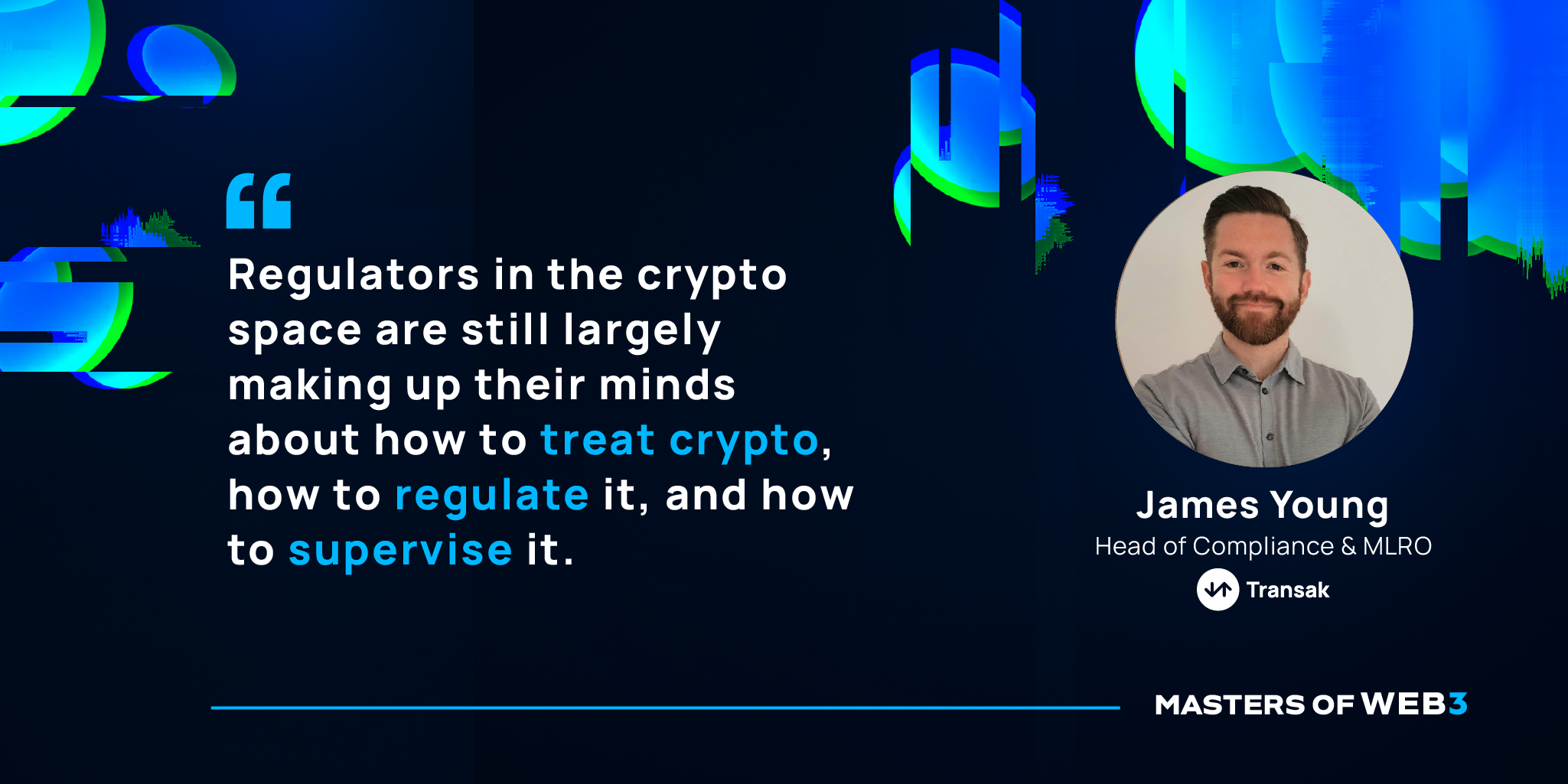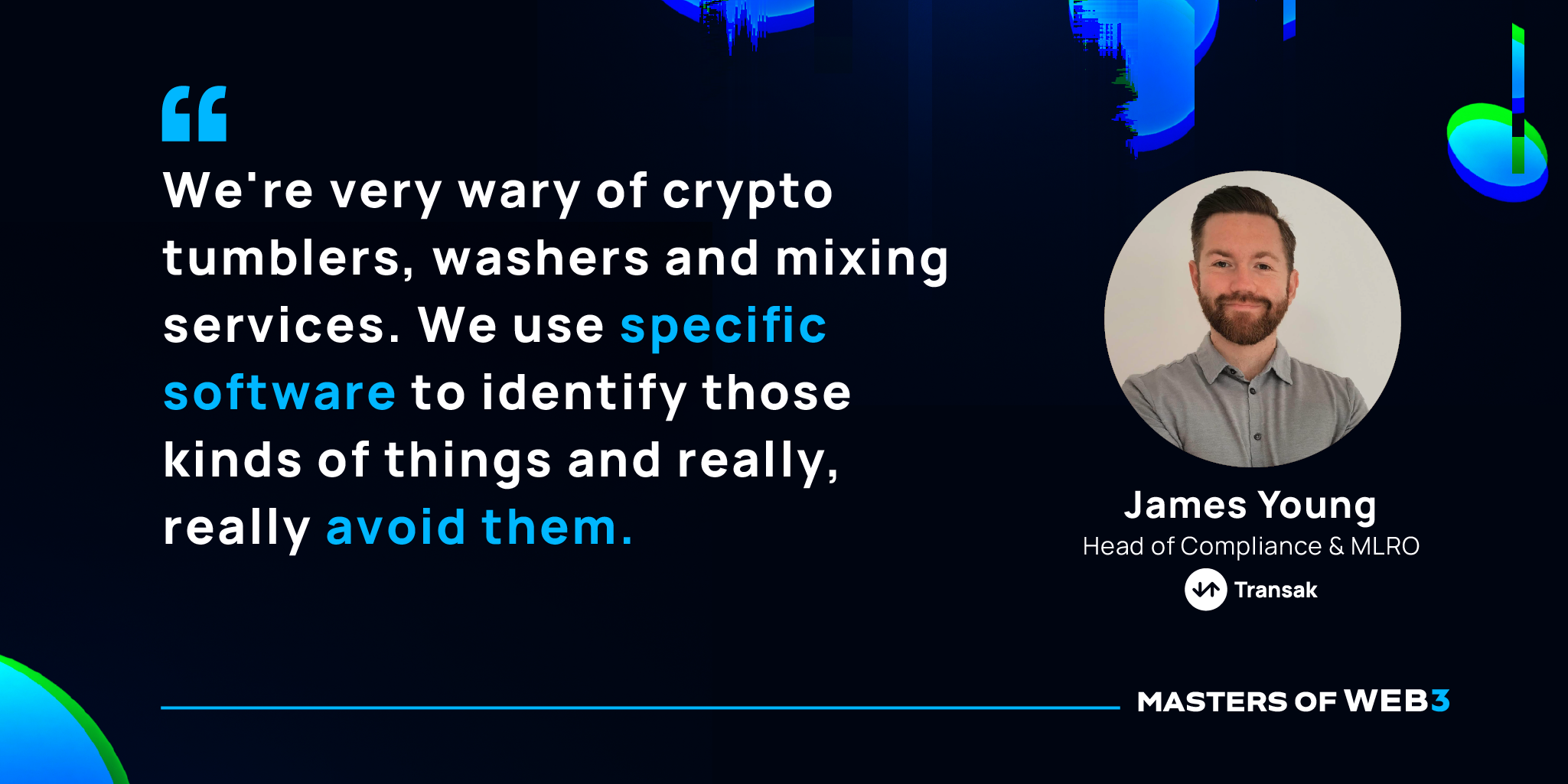Let’s be honest. Crypto has a compliance problem. Blockchain is a global, permissionless, borderless digital technology that expands beyond geography. Yet, regulatory bodies exist in every nation, state, and locality — making it hard for industry players to know what’s legal and what’s not.
That’s why the work of people like James Young, Head of Compliance & MLRO at Transak, is so important.
Join us as we discuss:
- The headlines driving the newest crypto compliance concerns
- Why blockchain provides a safer avenue for regulation
- Why crypto is misunderstood
- How compliance can make your team shine
Headlines driving the newest crypto compliance concerns
The world of crypto has received its fair share of skepticism. However, it is essentially still up and coming since many people are uneducated and untrusting of the industry itself.
Much of this stems from its reputation in the mainstream media and traditional finance space. It is seen as a high-risk industry with lots of anonymity, money laundering, fraud, etc.
As crypto reaches new mainstream adoption levels, compliance gets pushed further towards the forefront of concern.

“Regulators in the crypto space are still largely making up their minds about how to treat crypto, how to regulate it, and how to supervise it.” — James Young
Both professionals and users in the crypto space must understand how blockchain works and how to access and work with its data.
A recent compliance concern in the media is “crypto tumblers” or “the tornado protocol”. This is when a service onramps money and “swirls it all around” to anonymize their data so that it cannot be tracked as easily. While this may sound like money laundering, many users also do this for privacy measures.
Either way, James and his team go to great lengths to ensure this practice isn’t overlooked.

“We're very wary of crypto tumblers, washers and mixing services. We use specific software to identify those kinds of things and really, really avoid them.” — James Young
Why blockchain creates a safer avenue for regulation
Though a large part of crypto is the anonymity of the blockchain environment, it is much more effective in creating transparency.
“If you look at the nuts and bolts of crypto and if you have the right compliance programs, etc., you can arguably be more successful in preventing these types of financial crimes than a traditional financial firm can due to the nature of DeFi,” explains James.
One can see the blockchain data and movement of funds by pinpointing the wallet address. This has done wonders for crypto compliance and has even helped the FBI track down two high-profile thefts.
Tools like Chainalysis and Elliptic allow users to trace their transactions wherever they end up down the line.

“In the centralized finance world, you follow the money for a good period of time, and then it will just disappear into layers of corporate structure. And you don't get that with crypto because of the nature of the blockchain.” — James Young
Why crypto is misunderstood
The most significant misunderstanding regarding crypto is that it's a shady side of finance.
Its anonymity and the fact that its mainstream adoption has been a slow burn has raised some eyebrows. However, people like James Young urge skeptics to look at the facts and realize that the industry is highly regulated, just as any other financial space.
“It's not all about criminality. I think if you look at the actual statistics, the criminal aspect of the crypto market is very, very small,” explains James.
As it stands, things like money laundering are still happening at much larger rates with cash than with cryptocurrency. On top of this, the technology used with cryptocurrency makes it much easier to access the data behind your finances than with TradFi.
How compliance can make your team shine
With James being the Head of Compliance at Transak, helping secure the world of crypto is a part of his and his team’s everyday routine.
He says that maintaining a close relationship with his team, always being in the know of their activity and what they’re working on and communicating when it comes to helping them out are key to maintaining a stellar compliance team.
“I spend a lot of time doing, and really building out the compliance framework for them to shine within, and to keep the company safe,” explains James.
James prides himself on empowering his colleagues and working together towards the same goal of ensuring the company’s success.
Want to learn more about crypto compliance, why DeFi is misunderstood, and how compliance teams deal with crypto's mainstream adoption? Listen on Spotify, Apple Music or wherever you listen to podcasts.


